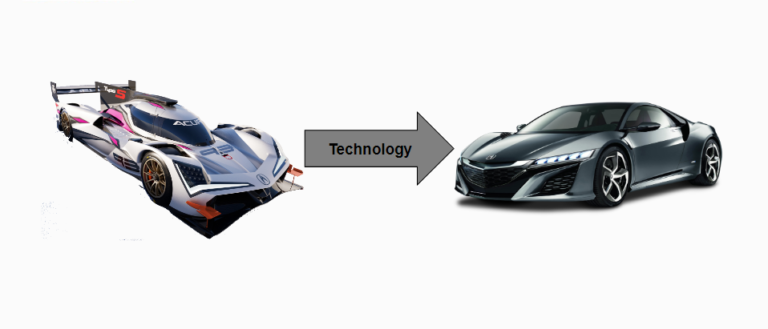Performance and Driveability
Alright, so let’s talk about vehicle performance and driveability! Many young car owners struggle with the misconception that modifying a car doesn’t affect its driveability. But what exactly is driveability? And how does it differ from vehicle performance?
When we talk about vehicle performance, we’re talking about how well a car can do its thing, like how fast it can go, how smoothly it can drive, how fuel efficient is it, and how it handles different situations. Now, driveability is all about how easy and comfortable it is to drive a car, and the smoothness of a vehicle’s operation at the will of a driver under all driving conditions.

Introduction: Performance and Driveability
Vehicle performance and driveability are critical aspects of modern automotive engineering, influencing not just how a vehicle feels to drive but also its efficiency, safety, and environmental impact. For passenger cars, three main quantifiers are used to rate a vehicle’s performance and driveability:
- Top speed
- Maximum gradability
- Acceleration time from a standstill to a reference speed (100km/h or 60mph)
Improving your vehicle performance
If your goal is to improve your vehicle’s speed performance then the initial step to achieve speed is enhancing your car’s efficiency. For a naturally aspirated ICE, increasing power involves:
- Enhancing airflow into the intake
- Improving airflow cooling
- Enhancing exhaust flow
- Increasing engine compression
- Adjusting timing
- Enhancing valve size and duration (valve timing)
- Increasing engine displacement
- Adding a catalyst (Nitrous Oxide)
- Adding forced induction
- Engine tuning
Modifying your vehicle’s driveability
Suspension modifications in the average commuter car aim to reduce noise, vibration, and harshness. However, performance-oriented modifications have the opposite goal, sacrificing comfort for better road grip. These modifications may include:
- Suspension lowering
- Stiffer/Adjustable springs
- Stiffer/Adjustable dampers
- Lighter control arms
- Lighter wheels
- Adjustable connecting links
- Stiffer anti-roll bars (sway bars)
How can I improve my fuel economy and performance?
Fuel efficiency refers to how efficiently a vehicle uses fuel. Improving fuel economy and performance can be achieved through several methods:
- Driving Habits: Drive conservatively. Steer clear of sudden acceleration, “jackrabbit” starts, and hard braking, as these actions can reduce fuel efficiency by 15 to 30 percent on highways and 10 to 40 percent in stop-and-go traffic.
- Regular Maintenance: Keeping your vehicle well-maintained, including regular oil changes, air filter replacements, and tire rotations, can improve fuel efficiency and performance.
- Proper Tire Inflation: Ensuring that your tires are properly inflated can improve fuel economy by reducing rolling resistance and enhancing vehicle ride and handling.
- Weight Reduction: Removing unnecessary items from your vehicle can reduce overall vehicle mass and improve fuel efficiency and performance. Remember the heavier your vehicle is the slower it also will be!
- Aerodynamics: Improving the aerodynamics of your vehicle, such as removing roof racks or spoilers when not needed, can reduce drag and improve fuel efficiency.
By implementing these strategies, you can improve both your vehicle’s fuel economy and performance.
What are Vehicle Modes and how do they affect Performance and Driveability?
If you’re behind the wheel of a relatively recent vehicle, it’s likely equipped with various driving modes. Typically, drive modes adjust a car’s suspension, steering, transmission, throttle, and overall performance. The goal is to dynamically modify these systems to match the driver’s preferences.
These modes represent different states or conditions in which a vehicle operates, such as idling, cruising, accelerating or braking. Checking operating modes involves ensuring that the vehicle is functioning correctly in each mode, as any deviation can indicate underlying issues that need to be addressed.
In essence, a driving mode adjusts the characteristics and driving behavior of a car using the vehicle motion equation. Automakers can ensure that a driver is getting the braking, traction, and coasting performance they expect. That way a drivers can customize their vehicle’s performance so that it suits their mood or makes driving easier in specific conditions or on different types of terrain.

Checking Operating Modes
Checking the operating modes is like making sure the car is doing what it should be doing in different situations. For example, if you’re driving and the car suddenly starts jerking or making strange noises, that might be a sign that something’s up with one of the operating modes. There are two main ways automakers verify their driving modes are performing in the way they intend:
- Compare the profile with the coasting solution over a time step
- Numerically differentiate the profile 𝑣(𝑡) to obtain 𝑑𝑣/𝑑𝑡 and solve for 𝐹𝑡

step
Common Vehicle Modes found on vehicles:
Many vehicles come equipped with driving modes that share similar names, but their functions can vary. The specific driving modes available depend on the manufacturer and the nature of the vehicle. However, some popular driving modes include:
- Default mode: Typically the car’s default setting which is usually well balanced.
- Eco mode: Optimizes the car for maximum fuel efficiency.
- Comfort mode: Focuses on providing the most comfortable ride possible.
- Sport mode: Enhances the car’s performance by adjusting throttle response, and in some cases, suspension, gearbox, and exhaust settings.
- Sport Plus mode: A more aggressive version of Sport mode, often disabling driver aids like traction control.
- Track mode: Configures the car for optimal performance on race tracks.
- Dynamic mode: Essentially another term for Sport mode.
- Terrain mode: Found in off-road SUVs, it optimizes the car’s performance for challenging terrain.
- Drift mode: Typically found in all-wheel-drive cars, it shifts power to the rear wheels to facilitate drifting.
- Individual mode: Allows drivers to customize the car’s settings to their preferences.
How does the braking system affect vehicle performance and driveability?
The braking system plays a crucial role in overall vehicle performance and driveability. A well-functioning braking system not only ensures safe and effective deceleration but also contributes to the vehicle’s handling and stability. The braking system’s efficiency affects how quickly and smoothly a vehicle can come to a stop, which is essential for driving in traffic or emergencies. Additionally, the braking system’s responsiveness and consistency impact the driver’s confidence and comfort behind the wheel.

Driving Style and Vehicle Performance
Despite advancements in vehicle technology, the best way to reduce fuel consumption in existing vehicles involves modifying driving habits, particularly by reducing driving aggressiveness. The interplay between vehicle performance and certified fuel consumption is intriguing due to the acknowledged tradeoff between the two. Notably, more powerful vehicles have the capacity for heightened driving aggression, highlighting the significance of understanding and managing this relationship.

Intro to Driving Cycles:
A driving cycle is a standardized pattern of vehicle operation (speed and elevation) created by various countries, organizations, and researchers. It is used to evaluate a vehicle’s performance in terms of fuel consumption, emissions, driving range, and other factors. Driving cycles simulate real-world driving conditions while different driving cycles can have a significant impact on a vehicle’s fuel efficiency and emissions output, highlighting the importance of optimizing vehicle performance for these conditions.
- Serve as a standardized measurement stick for emissions and fuel economy
- Can compare across vehicles (benchmark)
- Serves as a proxy for “average” or typical driving
Drive Cycle Testing
Drive cycle testing involves using a chassis dynamometer where the force applied to the wheels mimics the energy losses experienced by a vehicle driving a specific cycle. This type of testing is typically performed on cars and light trucks in controlled environments, with strict procedures to establish precise thermal initial conditions for the vehicle, such as hot soak and cold soak. The goal is to accurately simulate real-world driving conditions and evaluate the vehicle’s performance in terms of fuel consumption, emissions, and overall efficiency.

Commonly Used Test Cycles: US
In the United States, several commonly used test cycles are employed to evaluate vehicle performance and emissions. The most notable of these is the Urban Dynamometer Driving Schedule (UDDS), which simulates urban driving conditions, and the Highway Fuel Economy Test (HWFET), which simulates highway driving. These test cycles are mandated dynamometer tests that help ensure that vehicles meet regulatory standards for performance and emissions, providing consumers with more efficient and environmentally friendly vehicles.

Other Driving Cycles: US
Other common driving cycles include the New York City Cycle (NYCC), which is characterized by low-speed stop-and-go traffic conditions, typical of urban environments like New York City. This cycle is designed to simulate city driving scenarios, where vehicles frequently encounter traffic congestion and frequent stops. On the other hand, the US06 driving cycle is known for its high acceleration and aggressive driving schedule. It is often referred to as the “Supplemental FTP” driving schedule and is used to evaluate a vehicle’s performance under more demanding driving conditions, such as rapid acceleration and high speeds.

Commonly Used Test Cycles: Europe
In Europe, two commonly used test cycles for evaluating vehicle emissions and fuel economy are the New European Driving Cycle (NEDC) and the Worldwide Harmonized Light Vehicles Test Procedure (WLTP). Last updated in 1997 the NEDC was designed to assess emissions and fuel economy in passenger cars. However, it has been criticized for not accurately representing real-world driving conditions. To address this, the WLTP cycle was introduced, becoming mandatory for all new vehicles in Europe after September 2018. The WLTP is more stringent and aims to provide a more realistic assessment of a vehicle’s emissions and fuel consumption by simulating various driving conditions more accurately.

Mechanical Energy Demand
Mechanical energy demand refers to the energy required to propel a vehicle (Only traction force), excluding energy consumed while idling. To evaluate this demand, a velocity profile is often discretized based on a driving cycle, which represents the vehicle’s speed over time. The mean tractive force, calculated from this profile, is equivalent to the average energy consumed per unit distance traveled.

This metric provides insight into the energy efficiency of a vehicle under specific driving conditions, aiding in the optimization of vehicle performance and fuel efficiency.


Sample problem: Traction energy and the recuperation energy
valuate the traction energy and the recuperation energy for the UDDS and the HWFET for the vehicle
with mv = 1500kg, A · Cd = 0.7m2, and μ = 0.012 on a flat road. Assume perfect recuperation.
Solution:

Conclusion
In conclusion, vehicle performance and driveability are multifaceted concepts that encompass a range of factors, from operating modes and braking forces to driving cycles and test procedures. Understanding these concepts is essential for designing and evaluating vehicles that are safe, efficient, and environmentally friendly.






